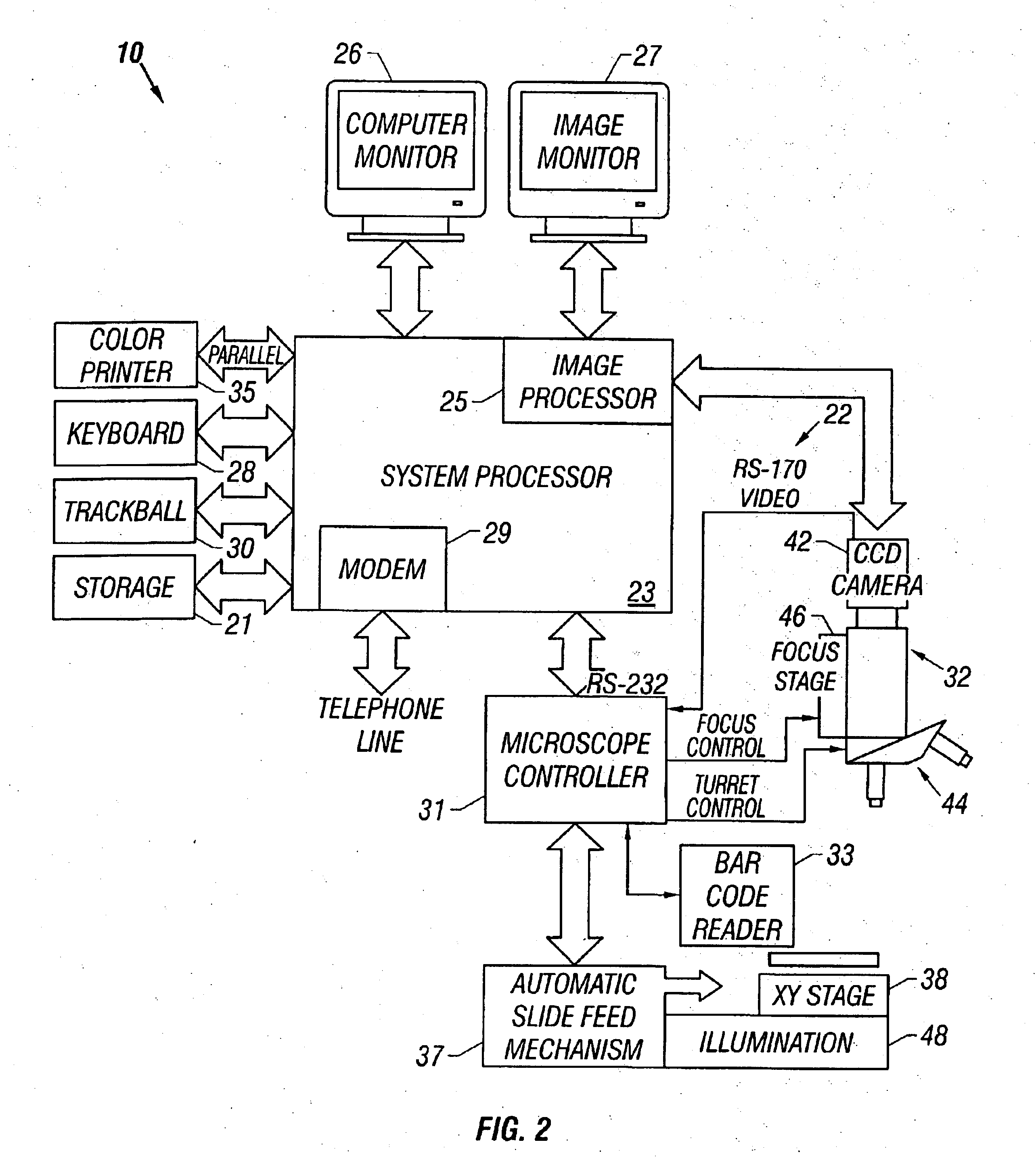Method and apparatus for automated image analysis of biological specimens
an image analysis and biological specimen technology, applied in the field of medical diagnostics, can solve the problems of continuous need for operator input, inability to accurately inability to include cells of interest errors, etc., to achieve rapid and accurate scan large amounts of biological material, high degree of training, and high cost
- Summary
- Abstract
- Description
- Claims
- Application Information
AI Technical Summary
Benefits of technology
Problems solved by technology
Method used
Image
Examples
Embodiment Construction
[0045]Referring now to the figures, an apparatus for automated cell analysis of biological specimens is generally indicated by reference numeral 10 as shown in perspective view in FIG. 1 and in block diagram form in FIG. 2. The apparatus 10 comprises a microscope subsystem 32 housed in a housing 12. The housing 12 includes a slide carrier input hopper 16 and a slide carrier output hopper 18. A door 14 in the housing 12 secures the microscope subsystem from the external environment. A computer subsystem comprises a computer 22 having a system processor 23, an image processor 25 and a communications modem 29. The computer subsystem further includes a computer monitor 26 and an image monitor 27 and other external peripherals including storage device 21, track ball device 30, keyboard 28 and color printer 35. An external power supply 24 is also shown for powering the system. Viewing oculars 20 of the microscope subsystem project from the housing 12 for operator viewing. The apparatus 10...
PUM
 Login to View More
Login to View More Abstract
Description
Claims
Application Information
 Login to View More
Login to View More - R&D
- Intellectual Property
- Life Sciences
- Materials
- Tech Scout
- Unparalleled Data Quality
- Higher Quality Content
- 60% Fewer Hallucinations
Browse by: Latest US Patents, China's latest patents, Technical Efficacy Thesaurus, Application Domain, Technology Topic, Popular Technical Reports.
© 2025 PatSnap. All rights reserved.Legal|Privacy policy|Modern Slavery Act Transparency Statement|Sitemap|About US| Contact US: help@patsnap.com



